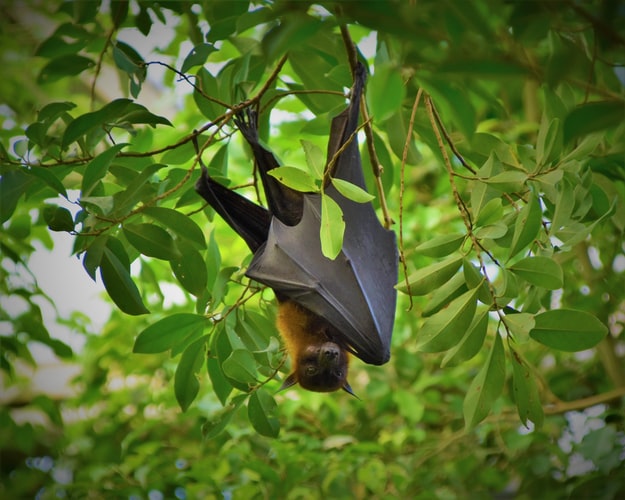Promote Forests for Health
By Leon Dulce
The COVID-19 pandemic, like many catastrophic infectious disease spreads the world has faced, could have been avoided if we treated our forests differently.
Indeed, various studies have demonstrated that 60 to 70 percent of recognized emerging infectious diseases (EIDs) are zoonotic, or originating from animals, mostly wildlife. A United Nations Food and Agricultural Organization study showed that 15 percent of these EIDs are associated with forests.
COVID-19 itself has been genetically traced back to bats, which are nocturnal forest and cave denizens. Bats are seen as the “ultimate incubator” for COVID-19 because of its robust immune system encouraging viral strains they host to adapt and evolve into dangerous and highly infectious pathogens.

Epidemiologists are scrambling to determine how exactly COVID-19 ‘spilled over’ from bats to humans, though initial scientific explanations point to the virus jumping from bats to other mammals to humans in the live animal markets of ground zero Wuhan, China.
What is clear is that the coronavirus would have remained dormant if its carrier species remained isolated away in intact forest ecosystems they inhabit.
Web of life, web of consequence
Forest biodiversity plays a huge role in disease control by promoting good microbiota that compete with the disease-causing pathogens, and flora and fauna that compete with or predate on virus-carrying species to keep their populations in check.
Forests also provide various ecosystem services such as food, water, climate regulation, and pollution control, all helping human populations improve their health and wellbeing.

This complex web of life is continuously unraveling as we continue to lose our forests. The Department of Environment and Natural Resources (DENR) itself estimates that our forest cover is down to just 7 million hectares or just 23.3 percent of the Philippines’ total land area. What can be considered intact forests are actually a mere 7 percent of our original pre-colonial forest cover.
The consequent biodiversity loss is catastrophic. In 2011, the rate of biodiversity extinction in the Philippines was already 1,000 times faster than the natural rate. Global average extinction rates at present are now up to 10,000 times faster.
The country’s latest climate change assessment report roots the biodiversity problem in key drivers such as land conversion, deforestation due to logging and conversion to agricultural land, mining, introduction of exotic species, and pollution.
The Philippine Forest Code has failed to arrest deforestation and these multiple challenges to the use of forest lands. It has served only to promote export-oriented timber plantations instead of sustainable forest management practices. Other extractive and destructive policies such as the Mining Act of 1995 also provide convenient trojan horses into forest protection policies.
This web of consequence extends to the global level through the Philippines serving as a waypoint for the global wildlife trade. We are not only a hotspot for poaching but also a porous entry and exit point of wildlife trafficking that reaches as far as Africa and Europe. Weak wildlife protection law enforcement clocking in at just 26% conviction and 13% penalization rates are failing to stop this continuing plunder of our biodiversity.

Rainforesting, rewilding
We the public deserve a ‘Green New Normal’ beyond the COVID-19 crisis. Promoting forests for health, from rainforestation to urban rewilding, is a crucial solution to the coronavirus emergency, recovery, and post-pandemic new normal that we urgently need.
We must address the perennial lack of public funds for forest protection. Latest available data indicate that there is an 80% financing gap between the actual average budget for biodiversity protection of P4.9 billion, and the recommended level of spending from 2008 to 2013. Government must double its current annual budget for environmental protection and biodiversity conservation up to P25 billion per year to address these financing gaps.
Government forest rangers and personnel are just 10% of what we need to sufficiently cover our entire forest areas with adequate enforcement. We must increase the number of employed forest rangers and personnel, and improve their job security by increasing their wages and protection needs.
Finally, we need to overhaul our forest, biodiversity, and natural resource laws. We have to be strict with the tradeoffs, making sure not a single project that threatens massive biodiversity loss will be allowed in our remaining forest corridors. #
= = = = =
Leon Dulce is the national coordinator of the Kalikasan People’s Network for the Environment (Kalikasan PNE), a grassroots-led national environmental campaign center established in 1997. Kalikasan PNE is a convening organization of the Citizens’ Urgent Response to End COVID-19 (CURE COVID), a national people’s initiative of various communities and sectors in response to the pandemic crisis and its impacts on their health and livelihood.
